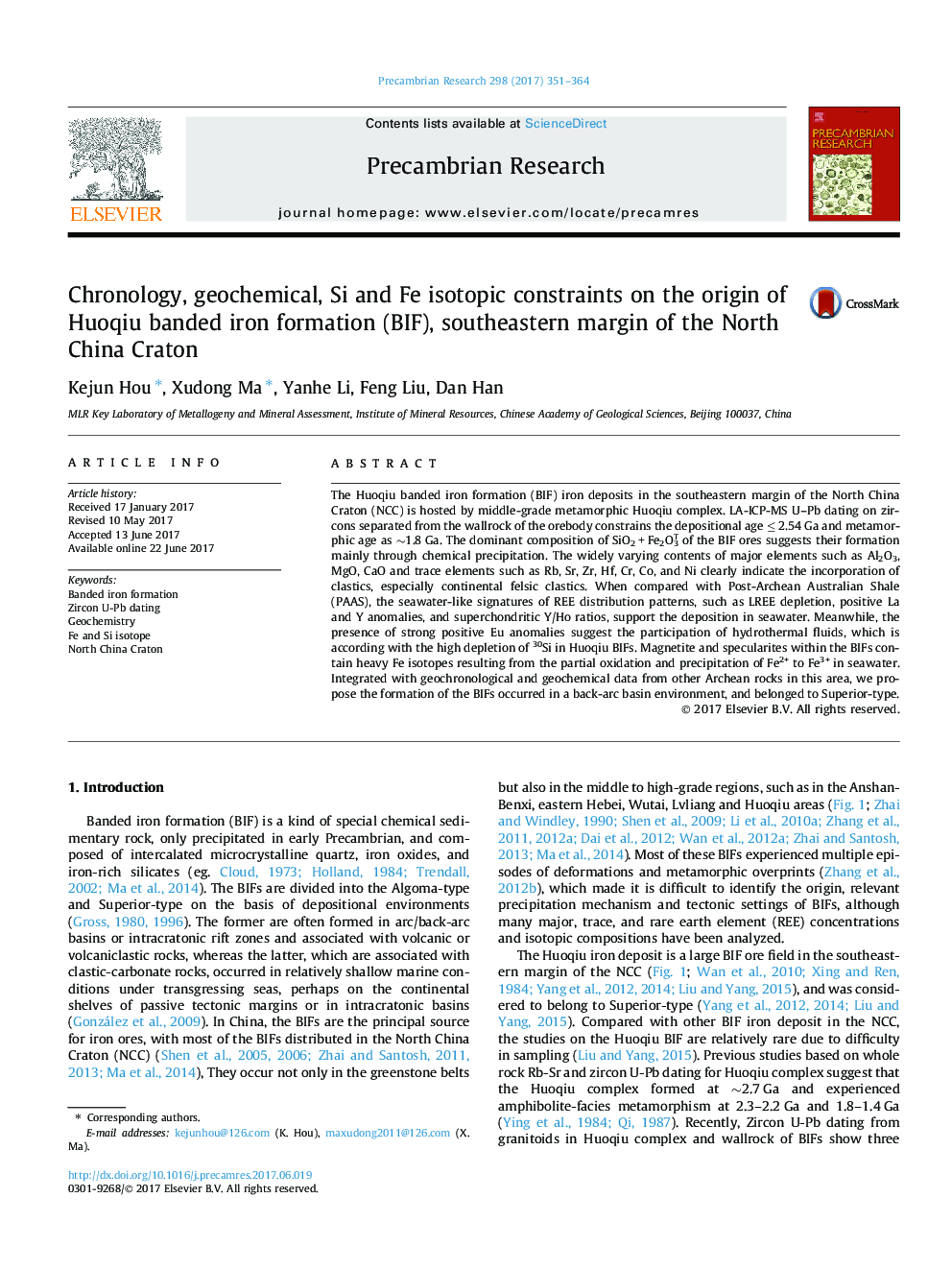| Article ID | Journal | Published Year | Pages | File Type |
|---|---|---|---|---|
| 5784802 | Precambrian Research | 2017 | 14 Pages |
Abstract
The Huoqiu banded iron formation (BIF) iron deposits in the southeastern margin of the North China Craton (NCC) is hosted by middle-grade metamorphic Huoqiu complex. LA-ICP-MS U-Pb dating on zircons separated from the wallrock of the orebody constrains the depositional age â¤Â 2.54 Ga and metamorphic age as â¼1.8 Ga. The dominant composition of SiO2 + Fe2O3T of the BIF ores suggests their formation mainly through chemical precipitation. The widely varying contents of major elements such as Al2O3, MgO, CaO and trace elements such as Rb, Sr, Zr, Hf, Cr, Co, and Ni clearly indicate the incorporation of clastics, especially continental felsic clastics. When compared with Post-Archean Australian Shale (PAAS), the seawater-like signatures of REE distribution patterns, such as LREE depletion, positive La and Y anomalies, and superchondritic Y/Ho ratios, support the deposition in seawater. Meanwhile, the presence of strong positive Eu anomalies suggest the participation of hydrothermal fluids, which is according with the high depletion of 30Si in Huoqiu BIFs. Magnetite and specularites within the BIFs contain heavy Fe isotopes resulting from the partial oxidation and precipitation of Fe2+ to Fe3+ in seawater. Integrated with geochronological and geochemical data from other Archean rocks in this area, we propose the formation of the BIFs occurred in a back-arc basin environment, and belonged to Superior-type.
Related Topics
Physical Sciences and Engineering
Earth and Planetary Sciences
Geochemistry and Petrology
Authors
Kejun Hou, Xudong Ma, Yanhe Li, Feng Liu, Dan Han,
